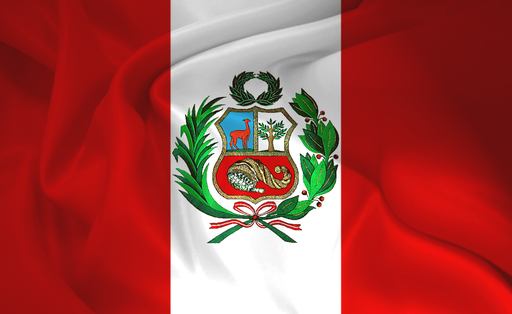
Guest post: This is an article from Daniel McKay whose personal experience with Spanish is similar to mine. He learned Spanish as an adult, has traveled significantly in South America and ran into basic confusions with Spanish when he landed for an extended period in Peru. The result of this experience is his book ¿Quién me llama? on Peruvian Spanish slang. -Jared
7 Spanish Slang Words to Impress Your Peruvian Friends
by Daniel McKay
Peru, like all other Spanish speaking countries, has it’s own unique slang. When I first arrived in Peru despite speaking Spanish fluently I could not understand everything that was being said and I felt like I was missing out on the best jokes or simply that I was missing an important part of the language and culture. So, I studied their Spanish slang and wrote a book ¿Quién me llama? to help others who find themselves in the same situation.
There are a number of daily situations where knowing a little Peruvian slang can really go a long way, and some of these slang words can really impress your Peruvian friends as I found out. Below is a selection of 7 extremely common Peruvian Slang words taken from my book that you will hear daily. It is only when you learn and use these words that you will get to see just how common they are.
1. chela:
Beer, it is not a brand of beer, rather just a name for any beer. You find may yourself getting invited for a couple of beers if you are lucky.
Example:
Vamos a tomar un par de chelas.
(Lets go have a couple of beers.)
2. chamba:
This is just like saying ‘trabajo‘ which means work.
Example:
No encuentro chamba en ningun lado.
(I don’t find work anywhere.)
3. huachafo / huachafa:
This is a person that has very bad or very poor taste. For example, somebody that wears ridiculous clothing that do not match.
Example:
Alejandra es tan huachafa que nadie quiere salir con ella.
(Alejandra has such bad taste that nobody wants to go out with her.)
4. choro:
In other Spanish speaking countries you will be used to hearing the word ‘ladrón‘ for thief, but in Perú they call thieves ‘choros‘.
Example:
El choro se escapó antes de que la policía pudo arrestarlo.
(The thief escaped before the police could arrest him.)
5. brichero / brichera:
For most single guys arriving in Peru, and particularly in Lima this is one of the first words that they will learn about. ‘Brichera‘, the name actually originates from Cusco, and it specifically refers to gringo hunters, but it includes any foreigner not just gringos. There are several different types of ‘brichera‘, firstly those that just want to be taken out on the town and wined and dined, and then there are those with the more serious ambition of being taken overseas and given a new life.
One thing that you have to be careful with in Perú is assuming that any girl with a foreigner is a ‘brichera‘, this is certainly not the case. It is their predefined goals and the actions taken to achieve them that are what defines a ‘brichera‘. There are certainly a lot of ‘bricheras‘ in Lima, and many of them will visit the tourist zone in Miraflores hoping to get her ticket out of Perú.
‘Bricheros‘ are far more noticeable in places like Cusco where there is quite a lot of competition. They often hang out in the markets with the specific aim of picking up a foreign girl.
Example:
Esa chica es una brichera, la veo con un gringo diferente cada fin de semana.
(That girl is a gringo hunter, I see her with a different gringo every weekend.)
6. chupar:
Literally in Spanish this means to suck. However, it is used in the context of drinking alcohol in Perú. In place of ‘tomar‘ you will hear ‘chupar‘ especially amongst groups of friends.
Example:
Vamos a chupar este viernes para celebrar el cumpleaños de Mario.
(We are going to drink this Friday to celebrate Mario’s birthday.)
7. chifa: This has two closely related meanings in Perú, firstly it means Chinese food, and secondly, it means Chinese restaurant. In fact if you first arrive in Lima airport and head into the city you cannot fail but notice the large number of restaurants that have CHIFA on their signs. All of these are as you guessed it, Chinese restaurants.
Example:
El chifa en Perú es muy rica.
(The Chinese food in Perú is very good.)
Where to learn more Peruvian Spanish slang
Another great resource for learning Peruvian Slang is the popular TV series Al Fondo Hay Sitio. The fifth season is due out in march 2013, but previous episodes can be found on Youtube.com. The series revolves around a couple of families who live opposite each other. One family is very wealthy and the other is poor. What is really fantastic about this series is that it deals with all of the classes and a lot of the ethnic groups that exist in Peru. It is extremely humorous and I for one have become an addict.
Also, if you would like to learn more Peruvian Spanish slang, ¿Quién me llama? is available in paperback and Kindle.
Check out these other Peru Spanish Slang Word articles.
Featured photo credit: By Fernando Rodríguez Barboza (Own work) [Public domain, GFDL, CC-BY-SA-3.0 or FAL], via Wikimedia Commons |
